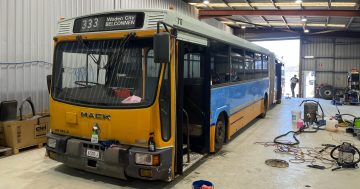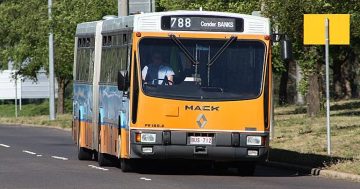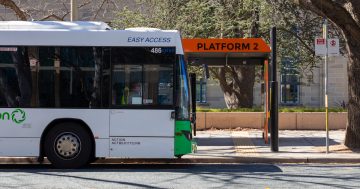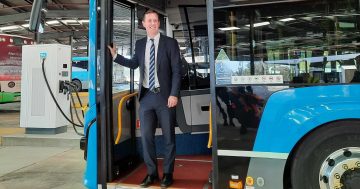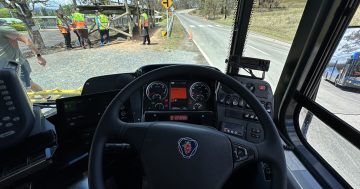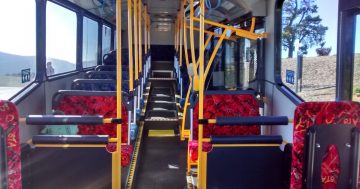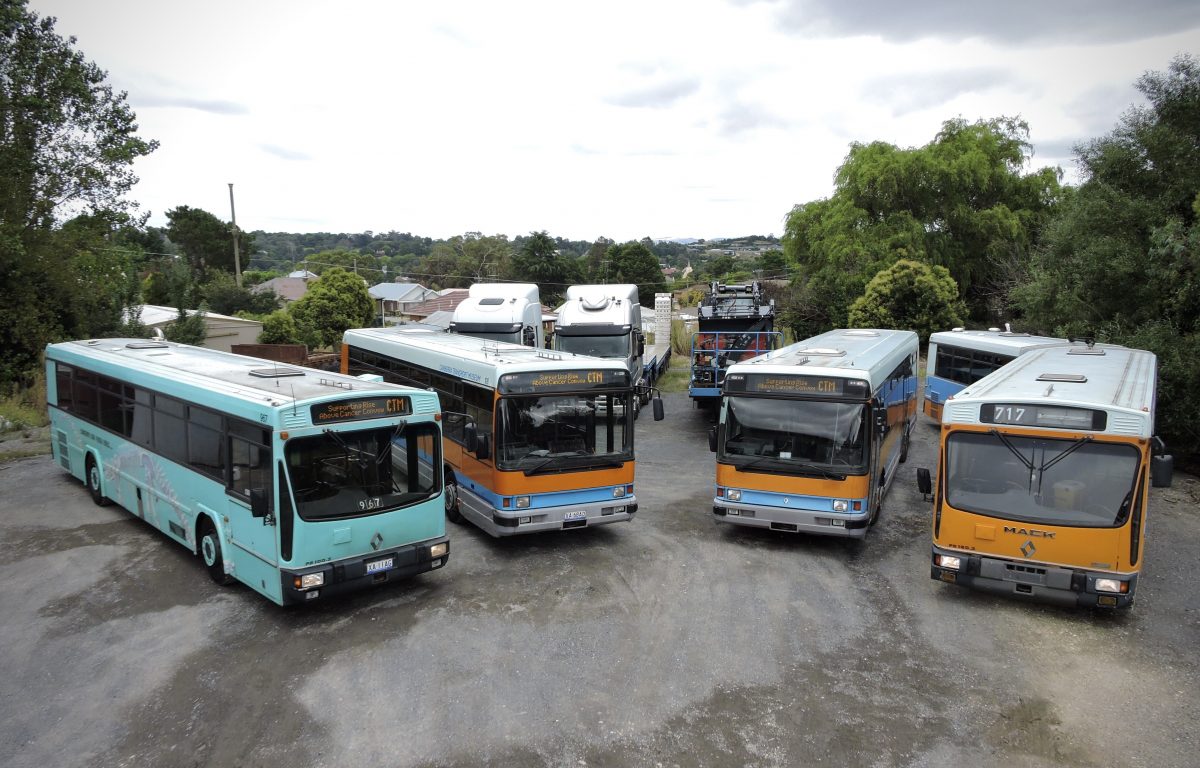
Old ACTION buses from the Canberra Transport Museum. Photo: Brock Ginman.
If you see Bus 974 on the roads around Canberra, chances are, Stephen Casey is at the wheel.
‘Gwendoline’ will be among 35 of the old orange and blue ACTION buses to retire at the end of this year when a wave of leased low-emission Scanias arrive. But while the Renault PR100.2 (badged Mack) buses are still here, this bus driver of five years will continue to go out of his way to drive them.
“I don’t think I’ve ever worked a split shift where I haven’t had one of the orange and blue buses rostered for at least one end of the day,” Stephen says.
“Some drivers hate them. And passengers don’t like them because they’re old. Maybe it’s an age thing, but I just like driving them. They feel safe and sturdy, and in a lot of ways, easier than the newer buses, because there’s less that can go wrong. For instance, if you have any issues with the doors, nine times out of 10 you can fix it yourself, as opposed to the newer buses where you have to call out a mechanic.”
The thought of driving Canberra’s buses for a living first occured to Stephen when he left a career in the Navy behind and started work at the Woden Tradesman’s Union Club in 1988. The president of the club, a bus driver himself, urged him to join the team at the Australian Capital Territory Internal Omnibus Network, or ACTION.
Stephen and his wife went on to run a housecleaning business for the next two decades, at least until the joints began to complain and the thought returned to him.
“So I applied to Transport Canberra and by some stroke of good luck, I got through in 2017.”
Even today, many of the trainee bus drivers start in the old Renault buses, and Stephen was no exception. It was there he fell for them.
“But I didn’t tell anyone how much I liked them – remember the story of Brer Rabbit and the briar patch.”



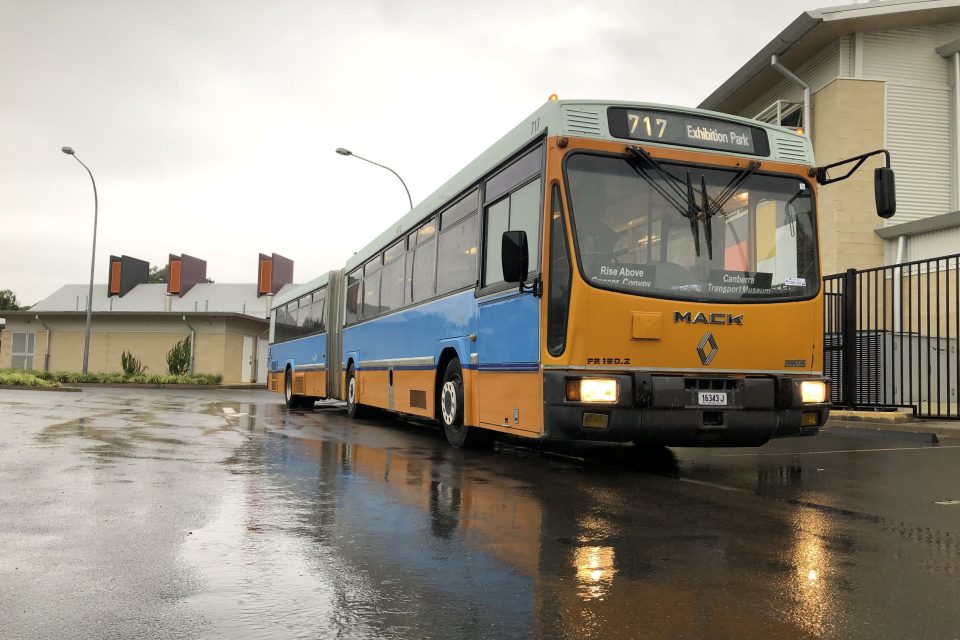


The first Renault PR100.2 buses hit Canberra’s roads in 1992, equipped with 42 seats, electronic destination equipment and AM/FM radios. There were a total of 258, followed by 34 articulated (bendy) versions and then 42 of the next-generation PR100.3 models.
The blue, orange and arctic green colour scheme had been adopted in the early 1970s and remained as the ACTION colours through to 2004, when the brand was refreshed with bright green, white and orange to signify the move to easy-access, climate-controlled and lower emission fleet. (This then changed to blue, white and grey in 2017 to mark the ‘Transport Canberra’ rebrand.)
Transport Canberra says each one has travelled about 1.5 million kilometres over three decades of service. They’re now preparing to say goodbye to the survivors “as an important step in the ACT Government’s transition to zero-emissions public transport”.
“When the orange buses are retired, Transport Canberra will either recycle the scrap metal or sell them off to interested parties for private use,” a spokesperson says.
Brock Ginman was one of those who bought an old ACTION bus. The 25-year-old self-confessed “bus enthusiast” has dreamed of a bus career ever since the trip to and from school in an old articulated bus.
“I would ride in the turntable section, when that was allowed,” he reminisces.
Not only is Brock a full-time driver nowadays, but he’s also treasurer for the Canberra Transport Museum.
This collection comprises 10 vehicles spanning 1981 to 1994, from Canberra as well as Queanbeyan and Sydney. They’re kept in a “friend’s backyard in rural NSW” until a permanent home and public display space can be found in Canberra.
“They’re not all roadworthy, but it’s very expensive to keep them all running all at once, but they’re generally in pretty good condition.”
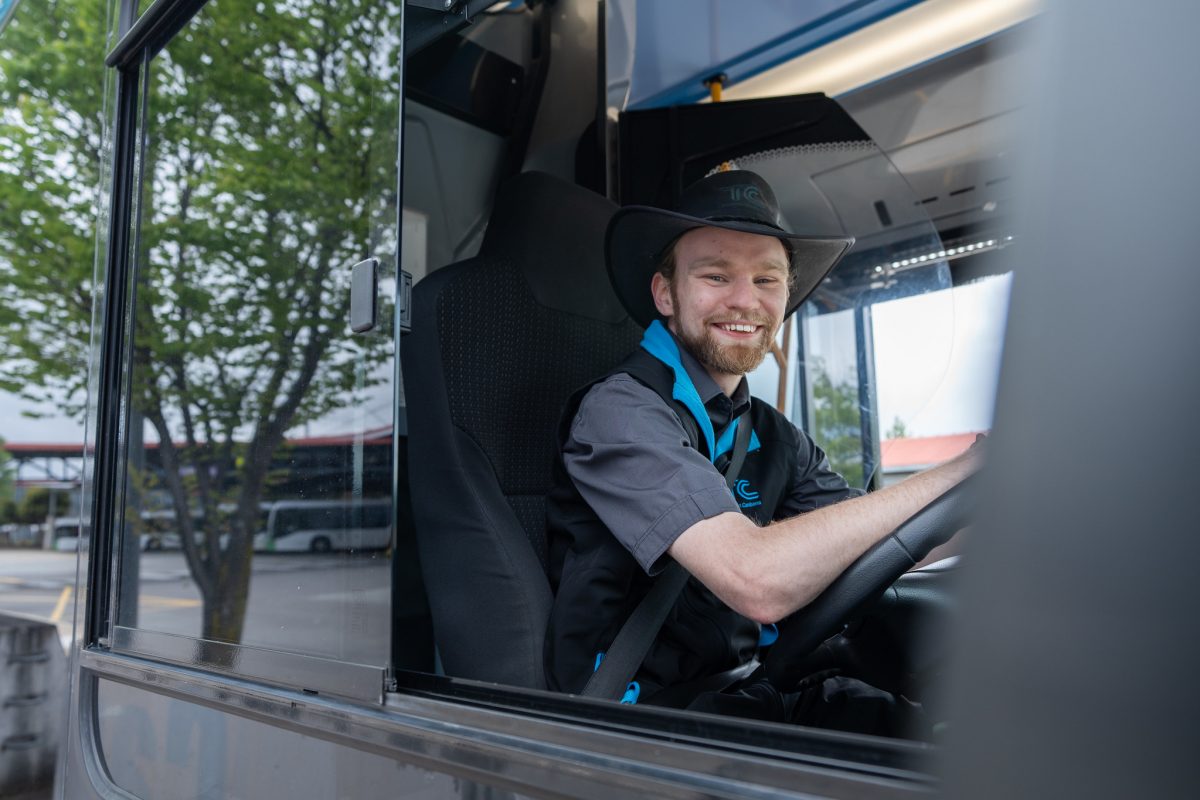
Brock Ginman. Photo: Transport Canberra.
Bus 967, or ‘Rexy’, was one of three Renaults to wear a special aqua-coloured livery depicting dinosaur bones, not to promote the National Dinosaur Museum – as some thought – but rather the slogan “Take ACTION [to] Conserve our fossil fuels”.
Rexy spent most of her life in the Belconnen depot, with some stints around Tuggeranong. She was removed from service on 4 May 2020, but put images of a future motorhome out of your head.
“I’m keeping it as it is, and just preserving it as a historical vehicle,” Brock says.
But it’s not a cheap hobby. Brock fills the 200-litre tank with diesel at the Costco service station in Majura Park, with a full tank coming in at nearly $500 nowadays. Fortunately, “a tank lasts a while”.
“Generally, I just take it out for a short trip once a month to keep it healthy, plus any other special events,” he says.
“The steering is a bit heavier than the new buses, but it’s an absolute delight to drive. A lot of the newer buses are really smooth and comfortable, but they’re very, very easy to drive and you can almost forget you’re driving a bus. This one feels like a real bus.”
It seems Canberra is at the end of an era.












